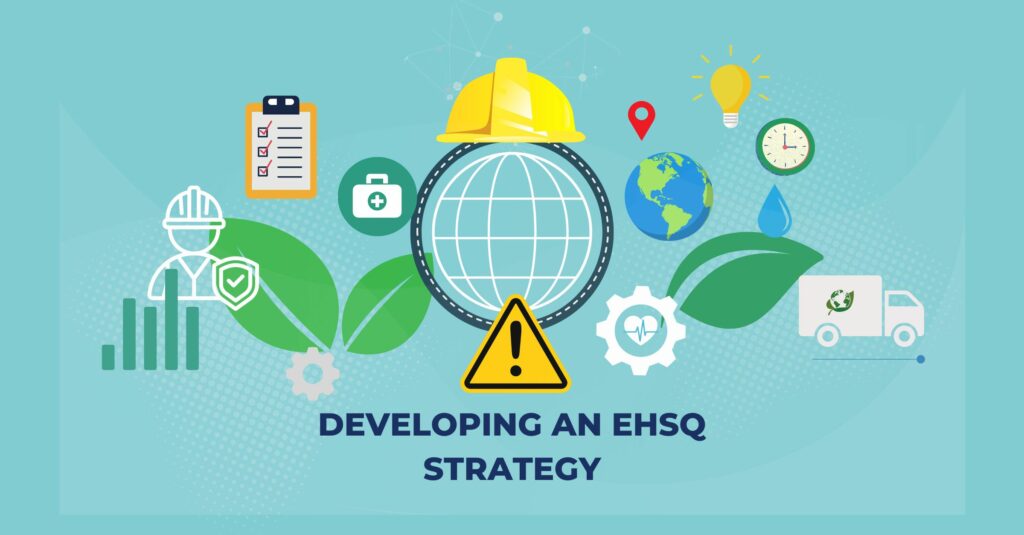
An EHSQ (Environmental, Health, Safety, and Quality) strategy is essential for organizations that seek to manage their operations effectively while ensuring the well-being of employees and maintaining compliance with regulatory standards. Integrating EHSQ principles into business operations is more than a regulatory necessity; it’s a strategic approach that drives significant business benefits.
By embedding EHSQ into the core of operations, companies can achieve better compliance, reduce risks, enhance employee well-being, and improve operational efficiency—all of which contribute to sustainable growth.
Key Components of EHSQ
EHSQ strategies are built around four key components: Safety, Environment, Quality, and Health. Each element plays a crucial role in a successful EHSQ strategy.
Safety
Safety is paramount in avoiding incidents, accidents, and non-compliance issues before they occur. This component involves monitoring critical areas like observations, behavior-based safety (BBS), job safety observations (JSO), and risk assessments.
- Observations are foundational to preventive EHSQ practices. Regular safety walk inspections help identify potential hazards, track environmental conditions to ensure compliance, and monitor employee health to detect early signs of work-related illnesses. Additionally, these observations ensure that processes and products meet established quality standards.
- Behavior-based safety (BBS) focuses on identifying and modifying unsafe behaviors in the workplace. By observing employees while they work and providing constructive feedback on safety practices, companies can engage employees in safety discussions and encourage them to take ownership of their behaviors. Rewarding safe behavior further fosters a culture of safety.
- Job Safety Observations (JSO) involve structured assessments of specific tasks to identify and mitigate risks. This process includes breaking down tasks into individual steps, examining each for potential hazards, discussing safety aspects with employees, and keeping records to track trends and identify areas for improvement.
- Risk assessments are a systematic process for identifying, evaluating, and controlling risks. Key steps include recognizing potential sources of harm, assessing the likelihood and potential impact of these hazards, comparing risk levels against acceptable criteria, and implementing measures to eliminate or reduce risks. Regularly reviewing risk assessments ensures their effectiveness and allows for necessary adjustments.
Environment
Environmental management is crucial for ensuring sustainable operations and preventing incidents like spills, emissions, and regulatory non-compliance. This proactive approach involves monitoring environmental incidents, managing permits, conducting environmental risk assessments, and regularly measuring emissions and waste to adhere to environmental regulations.
- Environmental incident management plays a vital role in preventing incidents such as spills and emissions. Detailed incident tracking and analysis help identify root causes and develop preventive measures.
- Permit management is another key aspect of environmental management. It requires organizations to establish which permits are necessary, document them, and understand the specific conditions and requirements of each. Regular monitoring of compliance with permit conditions, such as emissions limits and waste management practices, is essential. Ensuring permits are up-to-date and conducting periodic reviews to accommodate changes in regulations or operations are also critical steps. Utilizing software for automated reminders and compliance reports can help maintain adherence effortlessly.
Quality
Quality management ensures that all processes, products, and services meet established standards and regulations. This involves adherence to industry standards, regular reviews of legal and regulatory requirements, and maintaining compliance checklists and documentation.
- Quality compliance involves adherence to industry standards like ISO 9001, legal regulations, and internal policies. Performing regular reviews of legal and regulatory requirements, establishing compliance checklists, and maintaining up-to-date records are critical aspects of quality compliance. Certification processes and proper documentation further ensure compliance.
- Quality control activities are designed to detect and correct defects in products or processes, while quality assurance aims to maintain quality standards throughout the process for consistent results. Implementing a Quality Management System (QMS) can help set these standards, identify non-conformances, and offer continuous training programs for employees—key to a robust EHSQ strategy.
Health
Health management is not just about compliance; it’s about fostering a supportive and productive work environment. Occupational health and hygiene are fundamental, requiring the identification and control of potential health hazards, from chemical exposures to ergonomic risks. Regular health monitoring and the provision of appropriate protective equipment are essential steps.
Wellness programs, such as fitness challenges and mental health resources, contribute significantly to employee well-being. A healthy workforce is more productive, and investing in wellness pays off in the long run. Mental health support, including stress management resources, is as crucial as physical health. Creating a work culture where discussing mental health is encouraged can make a significant difference.
- Ergonomics is another important aspect, as designing workspaces that fit employees’ physical needs can prevent strain and injuries. Small adjustments, like ergonomic chairs or adjustable desks, can have a big impact.
- Health education and training offer employees the knowledge to make informed health choices, empowering them to prioritize their well-being. Regular health surveillance and monitoring help identify emerging trends or issues early, enabling the organization to address problems before they escalate. Compliance with health regulations is mandatory, and staying updated with laws and standards ensures alignment with the latest requirements.
The Importance of EHSQ in Modern Business
Incorporating EHSQ strategies into business operations is no longer a luxury; it’s a necessity in today’s business environment. Tools like Intelex provide critical support in managing compliance, mitigating risks, improving efficiency, and enhancing overall performance. As businesses face increasing regulatory pressures and a growing focus on sustainability, leveraging advanced EHSQ tools ensures they can navigate these challenges effectively and maintain a competitive edge.
Modern EHSQ strategies bring multiple benefits:
- Safer Working Conditions: Investing in a modern EHSQ strategy creates a safer work environment. Advanced tools and protocols help identify and mitigate risks before they become serious problems, leading to fewer accidents and a safer workplace.
- Improved Health and Well-Being: EHSQ strategies focus on employee health and wellness. From better ergonomics to comprehensive wellness programs, these strategies support employees’ overall health, fostering a workplace where they feel valued and cared for.
- Regulatory Compliance: Keeping up with evolving regulations can be challenging, but modern EHSQ strategies help track and manage compliance more efficiently, avoiding fines and ensuring that legal requirements are consistently met or exceeded.
- Cost Savings: Implementing effective EHSQ practices leads to significant cost savings by reducing incidents and improving efficiency. Preventing issues before they escalate saves money in the long run.
- Enhanced Reputation and Competitive Advantage: A strong EHSQ strategy enhances reputation. Customers, investors, and partners increasingly consider how companies manage their environmental impact and treat their employees. Commitment to modern EHSQ practices builds trust and sets companies apart from competitors.
- Reduced Environmental Footprint: Modern EHSQ strategies minimize environmental impact. Implementing sustainable practices and using advanced technology reduces waste and emissions, contributing to a healthier planet.
- Sustainable Resource Use: Sustainability is key to long-term business success. Updated EHSQ practices manage resources efficiently, reducing reliance on non-renewable sources and promoting sustainable use.
- Compliance with Environmental Standards: A modern EHSQ strategy ensures compliance with environmental regulations, demonstrating a commitment to responsible practices and avoiding regulatory issues.
Conclusion
In conclusion, integrating an EHSQ strategy into your business operations is not just about compliance —it’s a strategic advantage that enhances safety, environmental stewardship, quality, and overall business performance. A strong EHSQ strategy helps mitigate weaknesses in workplace safety through proactive measures like behavior-based safety programs, job safety observations, and regular risk assessments, ensuring a safer work environment and reducing costly incidents.
Environmental management is critical for preventing compliance issues and demonstrating corporate responsibility. Effective EHSQ practices, such as incident management, permit compliance, and continuous monitoring of emissions, enable companies to minimize their environmental impact and avoid regulatory penalties. Modern EHSQ tools like Intelex streamline these processes, enhancing efficiency and ensuring data accuracy.
A comprehensive EHSQ approach also addresses employee health and well-being by fostering a supportive work environment, implementing wellness programs, and promoting both physical and mental health. By investing in advanced EHSQ tools and strategies, companies can drive continuous improvement, reduce operational costs, and position themselves as leaders in sustainability and compliance, setting the stage for long-term success in a competitive market.


